How should you organize kitchen cabinets? 9 set-up and decluttering tips from professionals you can try today
Learn the art of how to organize kitchen cabinets with these 9 expert tips to try out today
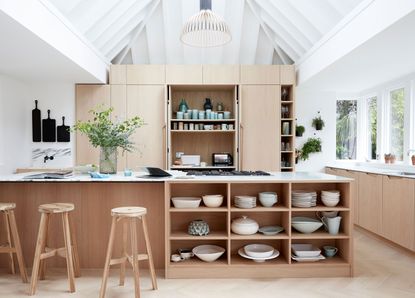

If you're figuring out how to organize kitchen cabinets in an ordered way, look no further. We've spoken to decluttering experts and professional organizers to help your kitchen become a zone for clean living.
Looking at your kitchen, ask yourself these key questions - is this kitchen cabinet really necessary? How are you getting the most out of the cabinet? Does your cabinet organization help minimize time spent in the kitchen? Is your cabinet in a practical spot? Working out the answers to these questions can really help you create an organized space, beautiful heart of the home. Here are the best ways to optimize your kitchen storage for a more functional kitchen.
How do I organize my kitchen cabinets?
1. Conduct an audit
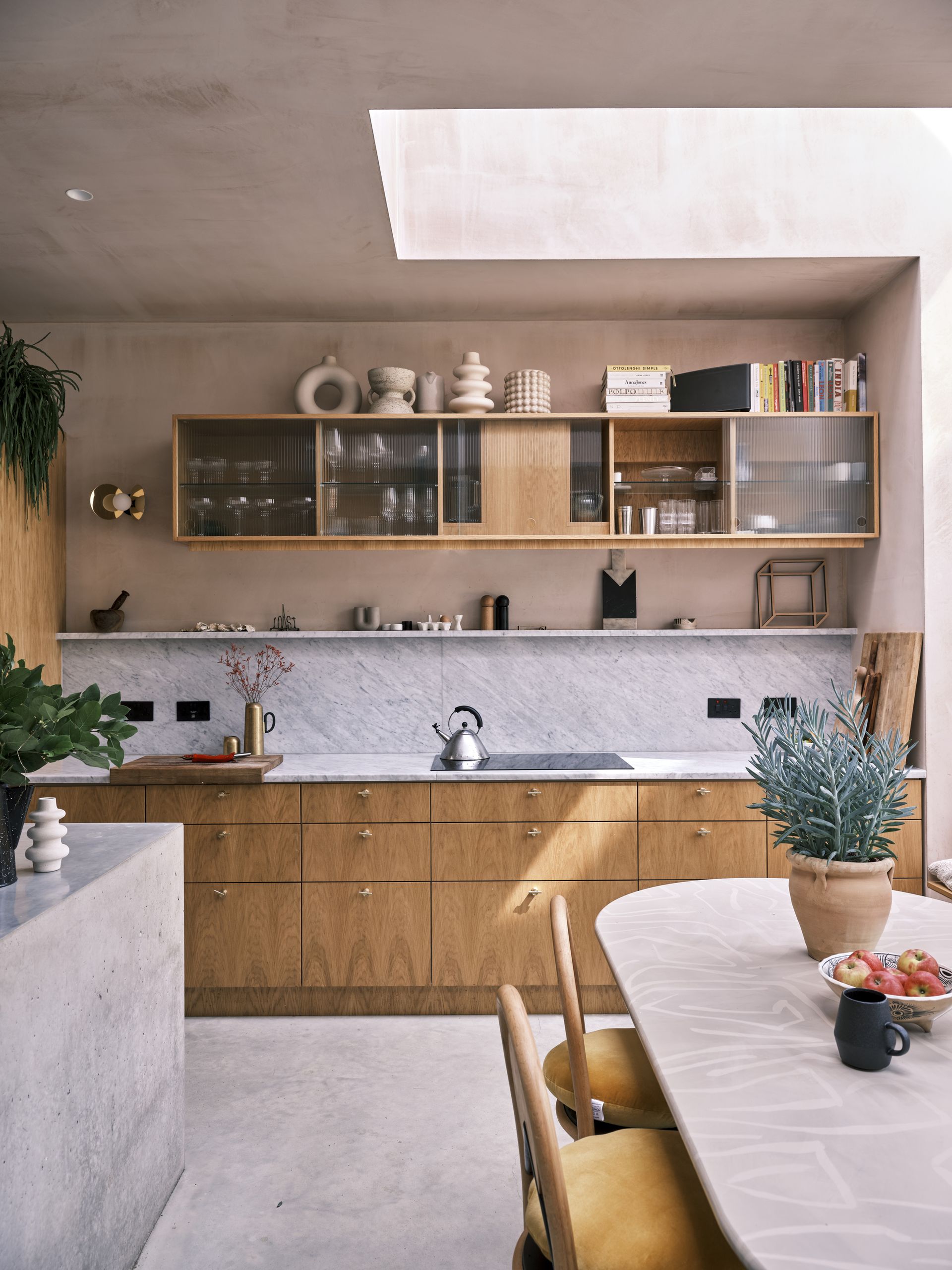
First thing first when attempting to organize your kitchen cabinets - take everything out of the cabinets and conduct an audit of what you already have. Throw away any expired foods, give your cabinets interiors a real thorough clean, and any food that you have in date, question whether you really need or use it, and if not, give it away to a worthy organization like a food bank.
‘While you are purging and decluttering, set a purpose,’ advises Michelle Urban of The Organized House. ‘Kitchens are the hub of the house, so they often collect unnecessary clutter like art supplies, tools, hair accessories, home maintenance items, and sports equipment. So, by setting a purpose for your kitchen, you can commit to what lives in the space and what does not.' This process in itself will give you a cathartic headstart to your dream decluttered kitchen
2. Use higher cabinets for food

Make sure you keep your food in the upper hung kitchen cabinets. Things like canned goods, snacks, boxed dry food, and cereals can sit in an upper cabinet without going out of date quickly, and typically have unsightly packaging that you might not want on display. Put your high-use ingredients in easy-to-reach places and group them together in categories - one for baking, one for canned goods.
Research what conditions fresh food likes, too. Fruit and vegetables need to be stored either at room temperature or in the fridge, while potatoes and onions need to be in a cool, dark place.
3. Keep heavy objects in low cabinets

Reserve space in your lower cabinets for appliances, plates and cookware. A separate space for heavier appliances closer to the ground makes things easier to find when you're cooking and means you don't have to bend down every time you're looking for ingredients.
'Lower cabinets can be perfect for storing pots and pans as well as your go-to appliances that aren't out in the open,' says professional organizer Britnee Tanner. 'Storing appliances like the waffle maker and pressure cooker on the bottom shelf means that they're still accessible during the week for mealtime but are also easy to put away to keep the kitchen looking tidy.'
If you have an appliance garage, this is the perfect spot for hiding away countertop appliances while keeping them close at hand, too.
4. Think tactically about your kitchen organization

You also might want heavier items on a lower shelf of an upper cabinet - closer to the ground so you don't have to do heavy lifting to reach for the bottle of oil. If you don't use it, keep it in a harder-to-reach place - it doesn't deserve prime real estate.
You might want to think tactically about how to organize your kitchen drawers and what you store in lower cabinets, too. 'In my own home, I have a lower drawer filled with healthy snacks for my kids so when they're hungry they can safely reach them and I'm not getting snacks all day,' says Unison Frances of Go Goodness Organizing.
5. Don't overstuff your cupboards

Overstuffing is a recipe for disaster - and one of the cardinal sins of pantry organization. Not only will this lead to more chaos in the cupboards but an overstuffed cupboard can be visually and aesthetically stressful.
You don't want to come back from a day at the office to have all your jars falling on you, so keep things simple and be realistic and ruthless about what you need and don't need.
6. Use cabinet organizers

Use cabinet organizers to maximize the space - a helpful tip for small kitchens. Keep things tidy with drawer dividers, labels, and food storage containers. These don't have to be unsightly either, Kilner jars can look neat and give a rustic kitchen vibe when filled with grains, rice, and cereals. Shelf risers are another good addition to your kitchen cabinet - keeping the item higher at the back so you can see clearly what you have and don't have.
Spices can also be neatly displayed to allow visibility. Consider a space shelf and label your spices for a neat and cohesive look, and avoiding you getting the cumin mixed up with the cinnamon.
‘Decanting is a good way to organize your cabinets - especially helpful if you have a small kitchen, where managing what's coming into your kitchen (and what stays there) is really important,’ says Laura Price, a professional organizer at The Home Organisation. ‘There's no room to store more than you need, and decanting helps you to easily see what you have, and takes the guesswork out of knowing what you need to buy and when. It's also much more space-efficient to store things in jars than in soft, opened packets, especially if you use square, stackable containers.’
Finally, Britnee advises using a lazy Susan turntable in the cabinet. 'They are great for sauces or spreads or just about anything else you want to have extra accessible.'
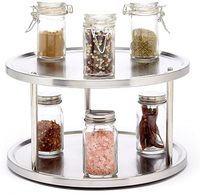
Two tier cabinet Lazy Susan, Amazon
Install a turntable in your kitchen cabinets to introduce not only a second level of storage, but so that you never have to go rooting around in the back for a lost spice jar.
7. Consider what to keep near the dishwasher

Another kitchen idea is to really think about what is kept near the dishwasher or kitchen sink. Place your cabinets filled with plates and bowls so that they are easy to reach and easy to put away after washing up. Glasses should be kept at eye level and are close enough to the tap so you can quickly grab a glass of cold water from the tap.
Cabinets near the dishwasher and tap might also want to be filled with cleaning products, washcloths and scrubbers, but keep these low - out of sight and away from food.
8. Keep open shelving looking beautiful

More and more kitchens are getting rid of upper cabinets - giving a cleaner aesthetic and helping a small kitchen look bigger. Instead, people are opting for open kitchen shelving, giving you an opportunity to display wall art, beautiful pots or an array chopping boards - shelving provides an opportunity to be decorative in the kitchen.
'I like to use contrasting textures, like glass next to a textured vase or a wooden vessel to get contrast,' says Julia Dempster. 'The contrast of textures, of reflective glass next to a raffia bottle or rough pottery makes the items stand out.'
'Play with heights too - if you want to add height and cannot find the height of vessel or vase you need, add piles books to gain height and create a mini pedestal below the item. I have also used this idea in kitchen shelves, using a cake stand pedestal to gain height.'
If you're worried that the removal of a cabinet is taking away precious storage space, fear not, there are plenty of other storage places that you might not have considered. 'Don't forget to use the space above the fridge,' says Charlotte Sitton of home organization company, Organized by Charlotte.
9. Add labeling to a pantry
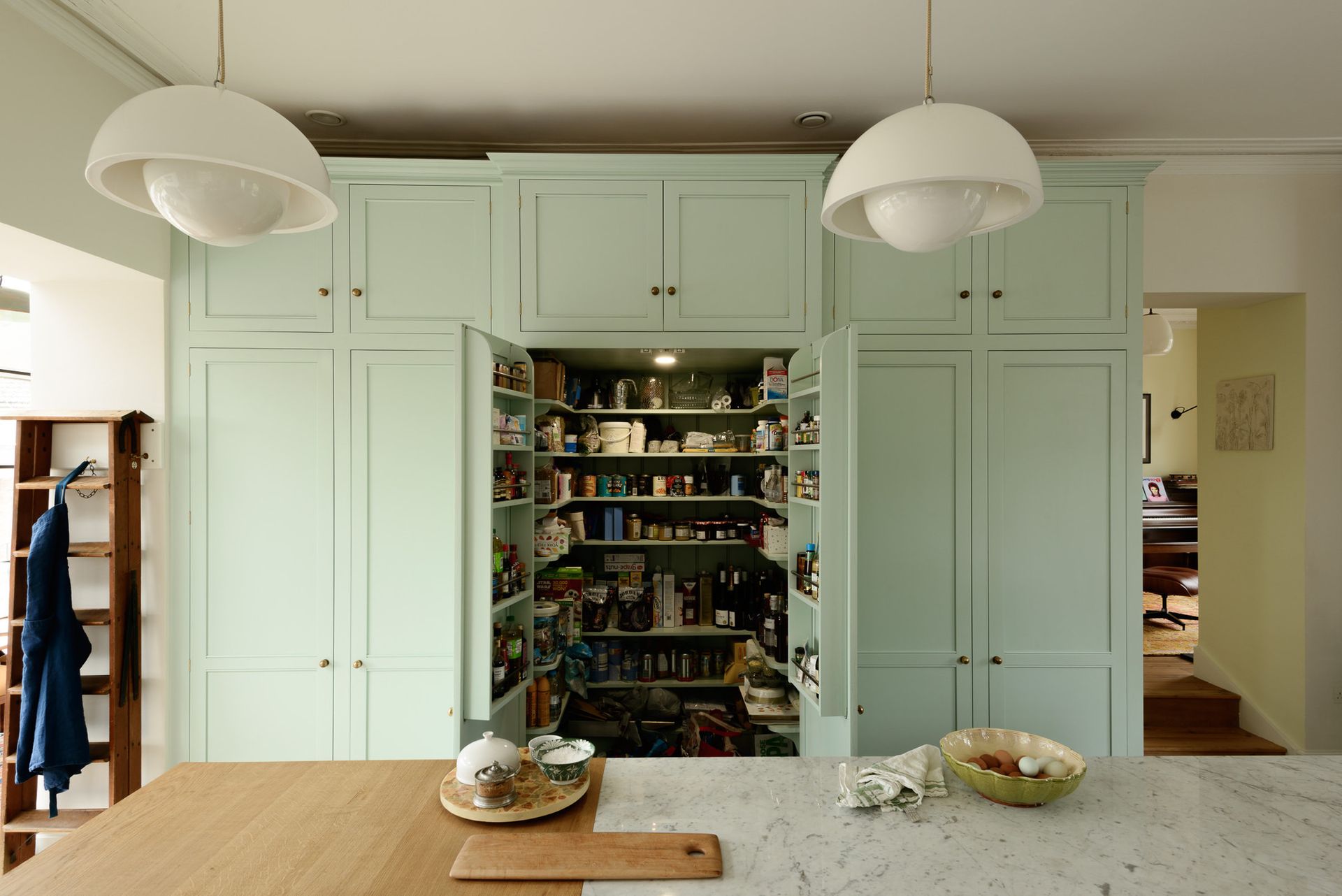
Consider doing away with mix-and-match lower and upper cabinets and invest in a full pantry instead. 'People get so much pleasure from seeing a well-kept pantry,' says Helen Parker of deVOL. 'The joy of opening up a tall cupboard and seeing rows of neatly arranged spices and expertly labeled well-stocked jars in beautifully made racks and trays is a pleasure.
Who could have imagined that keeping order in your kitchen could be so rewarding and joyous? There is something quite special about having carefully kept kitchen cupboards, about being happy and proud to open up the doors and drawers and see neatness and organization.' This beautiful painted cabinet and pantry combo is from deVOL.
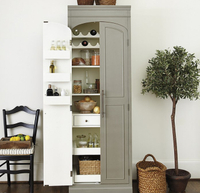
Paulette Kitchen Pantry by Ballard Designs
Up your cabinet organization by investing in a beautiful Shaker-style pantry. This one is available in cream, white and cornflower blue.
Be The First To Know
The Livingetc newsletter is your shortcut to the now and the next in home design. Subscribe today to receive a stunning free 200-page book of the best homes from around the world.

Oonagh is a content editor at Livingetc.com and an expert at spotting the interior trends that are making waves in the design world. Writing a mix of everything and everything from home tours to news, long-form features to design idea pieces on the website, as well as frequently featured in the monthly print magazine, she's the go-to for design advice in the home. Previously, she worked on a London property title, producing long-read interiors features, style pages and conducting interviews with a range of famous faces from the UK interiors scene, from Kit Kemp to Robert Kime. In doing so, she has developed a keen interest in London's historical architecture and the city's distinct tastemakers paving the way in the world of interiors.
-
 These 12 Best Table Lamps for Your Desk — Perfect Glows for a Creative Home Office
These 12 Best Table Lamps for Your Desk — Perfect Glows for a Creative Home OfficeThe best table lamps for your desk is have a soft, targeted glow. Elevate your WFH set-up with these stylish picks endorsed by Style Editor Brigid Kennedy
By Brigid Kennedy Published
-
 The Nespresso VertuoPlus is 30% Off for President's Day, and it's Kim Kardashian's Coffee Maker of Choice
The Nespresso VertuoPlus is 30% Off for President's Day, and it's Kim Kardashian's Coffee Maker of ChoiceThis sleek and stylish coffee maker was spotted in Kim's home bar, and you can currently save $60 if you buy yours from Amazon
By Lilith Hudson Published

